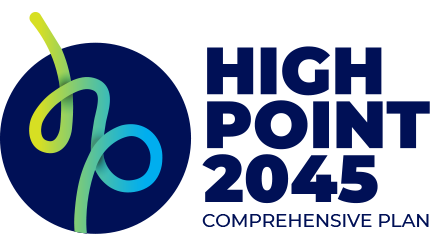OUR GROWTH FRAMEWORK
Open Space Preservation
Open Space Preservation
The preservation of open space, agricultural land, viewsheds, and land with the potential for future recreational amenities is as much a part of the growth framework as are the activity centers.
Growth is a function of supply and demand for land and, over the course of the past fifty years, the city’s boundary has gradually expanded to the north and northwest.
Piecemeal growth determined by a series of annexations has made park planning and open space protection a continual game of catch-up. Despite this, the City’s Parks and Recreation Department has done a good job to secure parkland and/or to protect natural resources or conservation lands such as wetlands, stream sheds, etc. The 2018 Parks & Recreation Comprehensive Master Plan indicates the city currently has 12.2 acres of parkland per 1,000 residents, just slightly below the benchmark average of 13.1 acres per 1,000 residents.

With 60% of the community strongly supportive of the preservation and acquisition of open space for either passive or active recreational needs, there is an urgency to begin this work.
As the city continues to grow at a 10% rate per decade, available land is quickly disappearing. Recognizing this, the community was presented with the following questions at a series of public open houses and an online survey.
While community support for additional building heights and density in the activity centers will generate increased property taxes over time to help pay for open space, land is a finite resource that appreciates in value annually as development in and around the City continues.
The 2018 Parks & Recreation Master Plan includes the following recommendations:
Add 155 acres of parkland to maintain a level of service of 13.1 acres of parkland per 1,000 residents and address geographic gaps in service especially in the northern area of the city
Develop a site master plan for High Point City Lake Park
Construct a total of 29 miles of trails and greenways as resources allow
Implement the Westchester Park Master Plan
Preservation of Land in the Planning Area
The community recommended a ‘major course correction’ relative to how High Point will grow from this point forward. The Planning Area is the area the City plans for as part of its long-range planning. It includes more than 20,000 acres within the four surrounding counties of Guilford, Davidson, Randolph, and Forsyth. Approximately 6,000 acres within the Planning Area are generally designated agriculture, open space, natural conservation/resource, or vacant and should be targeted for preservation.
The preservation of land in the Planning Area creates a financial benefit for the city on two fronts. First, the city does not have to install additional road and utility infrastructure in this area which greatly reduces the city’s Capital Improvement Projects (CIP) expenses. Second, it reinforces the intent to infill and revitalize the activity centers identified on the Place Types Map by reducing the supply of developable land outside the city’s existing boundary and redirecting growth/demand inward to these centers.
The Planning Area presents an opportunity for a greenbelt that surrounds High Point and creates natural open space between the city and the neighboring cities’ boundaries. At present, the boundaries of nearby cities are irregularly shaped alongside High Point’s boundary which results in a lack of definition and authenticity for each. A greenbelt around the city, where still possible, would provide the essential geographic separation to create a sense of entry, a gateway of sorts, into High Point.

FROM THE NORTHEAST DAVIDSON AREA PLAN
The Northeast area has a number of attractive environmental features including rolling hills, forested sections and several sizable streams. As development encroaches on these features, there is a growing concern that something of great value will be lost and the rural character of the area diminished.
Categories of Tools to Preserve Land
Open space preservation strategies typically fall into one of three different categories - planning, regulation, and acquisition
PLANNING
Identify important natural resources, preserved lands, and linkages
GIS mapping can be used to identify and target land for future preservation.
Educational campaigns inform citizens, and local officials, of the benefits of open space preservation.
Development and design tools such as conservation subdivision design, clustering, and planned developments can be incorporated into zoning ordinances to preserve private land.
REGULATION
Use of local ordinances and state laws to protect important natural resources and lands that surround preserved areas
Where acquisition of land for permanent preservation is unlikely, large lot or agricultural zoning designation, will ensure preservation of private land while allowing use of the property.
A “Voluntary Agricultural District” program provides tax advantages for property owners who voluntarily initiate farmland protection on their property.
Overlay ordinances can be used to protect specific resources such as steep slopes, stream corridors, water supply watersheds, and critical habitat.
A transfer of development rights program (TDR) allows owners of agriculture/open space lots to sell density to property owners where development and density are desired.
ACQUISTION
Obtain land through purchase or donation; includes purchase of full title, development rights and/or conservation easements
Open space bonds or open space sales tax create significant funding sources specifically dedicated to land acquisition.
The establishment of a Greenbelt Advisory Board can create a group of local open space champions to lead a grassroots fundraising campaign.
Coordination with and support of the regional land conservancy provides partnership opportunities to expand local open space efforts beyond local boundaries.
Coordination and collaboration with the surrounding jurisdictions.






